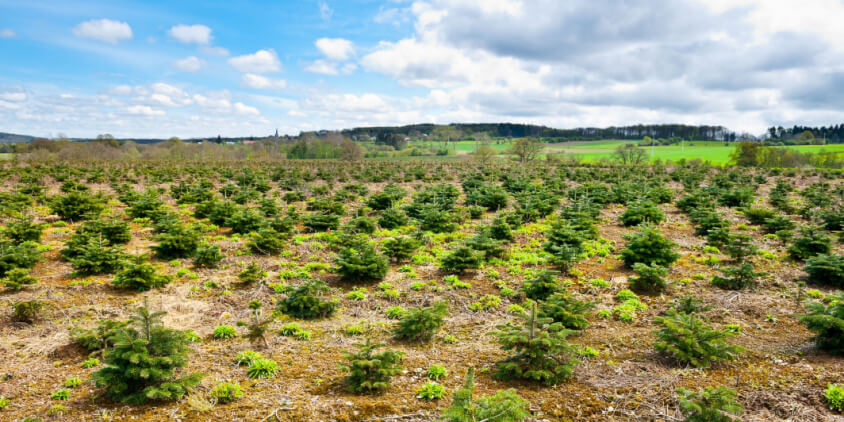
Afforestation Measures And Their Sustainable Impacts
As a result of deforestation, climate change, and the loss of biodiversity, our planet’s health hangs in the balance. Despite these bleak prospects, there remains hope in the form of afforestation, an all-encompassing approach that aims to transform barren landscapes into forests. From fostering thriving ecosystems to mitigating climate change, this practice offers a multitude of ecological, economic, and social benefits.
However, afforestation activities often face challenges due to the intricacy of their planning and execution. One possible approach to overcoming these obstacles and paving the path for afforestation innovations is to use remote sensing data and machine learning technologies.
What Is Afforestation?
Afforestation, in its most basic definition, is the planting of trees in a long-time (at least 50 years) unforested region. Land that has been left fallow because of soil quality depletion or overgrazing is often the target of afforestation measures. Many areas could benefit from these initiatives, such as dry, deserted areas, degraded grazing pastures, idle farmlands, and decommissioned industrial zones.
Afforestation is also necessary for carbon dioxide removal since trees collect CO2 from the air throughout their growth, and forests may store this carbon over decades. Besides reducing atmospheric carbon dioxide levels, this method provides other context-dependent benefits for ecosystems and local communities.
While their shared goal of increasing tree populations highlights many similarities, afforestation and reforestation have substantial differences. Afforestation refers to setting up forests in areas that have been devoid of them for a long time. Meanwhile, the goal of reforestation is to increase tree density in previously forested areas that have experienced tree loss. Afforestation and reforestation are two options for revitalizing deforested land.

Types Of Afforestation
Afforestation might take the form of natural recovery, industrial plantations, or agricultural forestry (agroforestry). Planning a planting is like strolling through a garden of options; each must be carefully considered in light of the specific conditions and demands of the surrounding area and its inhabitants.
Natural Regeneration
This type of afforestation creates natural forests, which are the best carbon sinks and habitat builders. If more species are involved in their planting, these forests may develop into multi-faceted habitats for numerous animal species and providers of valuable ecosystem services.
Commercial Plantations
Commercial plantations are established for economic gain, with the primary goal of producing certain commodities, such as timber. They serve as temporary carbon sinks but will eventually be felled. To illustrate: in Britain, more than 50% of the harvested timber is consumed for less than 15 years, and roughly 25% is burned, confirming that this afforestation method doesn’t actually aid the climate issue . Moreover, natural local forests are frequently sacrificed to make room for commercial plantations and timber harvesting.
Agroforestry
Afforestation for the purpose of growing almonds, avocados, cocoa, mango, and other crops is known as agroforestry. This form of planting can be used to boost the carbon capacity of existing farmland and typically supplies a life-sustaining source of food and money for local communities in underdeveloped regions.
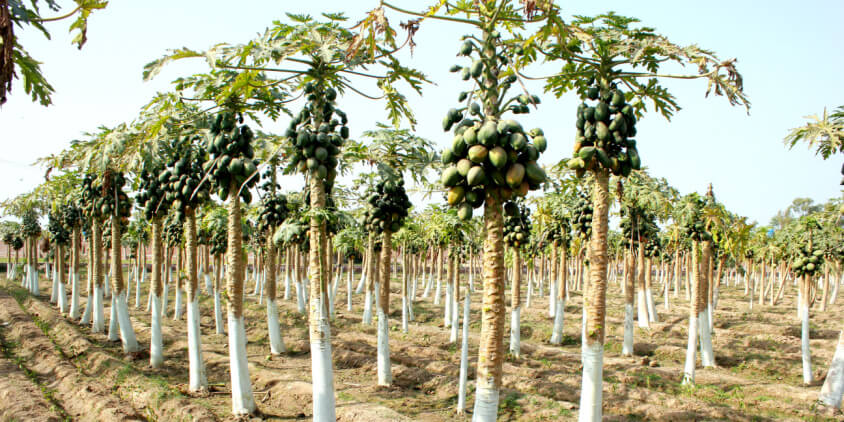
Advantages Of Afforestation
It is an effective strategy for revitalizing ecosystems and building a greener tomorrow. We’ll go into detail below about the many benefits of afforestation and how it helps the world’s ecosystems, populace, and economy.
Addressing Global Warming And Carbon Sequestration Problems
The greenhouse effect is a significant factor in the present climate crisis. Trees mitigate climate change because they take in carbon dioxide from the air and store it in their woody tissues. As a result, by absorbing carbon dioxide from the atmosphere via photosynthesis, afforestation offers a solution to climate change mitigation. Besides, you can help the environment and your finances at the same time by implementing afforestation and earning carbon credits for it.
Biodiversity Conservation
The effects of afforestation on biological diversity are huge, especially when native trees are planted. This practice helps maintain biodiversity by establishing new forested habitats for countless species of plants and animals. Afforestation technology typically prioritizes planting native tree species because of the positive effects they have on local ecosystem restoration and wildlife population recovery.
Reducing Erosion And Increasing Soil Quality
Trees’ roots bind the soil together; thus, afforestation prevents soil erosion and compaction and promotes the formation of stable soil aggregates. The extensive network of roots acts as an anchor, keeping the ground in place despite the effects of gravity, wind and water erosion. The impact of afforestation in dry regions is centered on enhanced soil structure and water-holding capacity. Trees also improve soil’s nutrient-cycling ability and organic matter content, both of which contribute to greater soil fertility.
Conserving Rainwater
In times when the need to conserve water looms large, there’s a call for afforestation as mitigation for the detrimental effects of rainwater runoff. With their dense vegetation and organic litter layer, forests act as natural sponges, allowing rainwater to infiltrate the soil and recharge groundwater, replenishing subsurface aquifers.

Enhancement Of Air And Water Quality
Forests, invaluable natural water filters, play a crucial role in enhancing water quality by effectively capturing sediments and absorbing harmful pollutants. Also, when converting agricultural land to forest through afforestation activities, you can reduce nitrate leaching fluxes to ground and surface water, mainly because less nitrogen is being added to the soil in the form of fertilizer and manure .
Furthermore, afforestation helps decrease air pollution since trees purify the air by removing noxious gases and releasing oxygen through photosynthesis. By reducing the concentration of toxic chemicals and particles in the air, these programs help people breathe easier and live healthier lives.
Economic Benefits
Afforestation can yield significant economic benefits. The timber and other wood products that are harvested from forests are vital to the logging industry. So businesses typically engage in planting trees to ensure a steady supply of raw materials (such as wood and charcoal) for their operations. Another economic benefit of afforestation is that it stimulates the local economy by creating new jobs and increasing the production of wood-based goods. Jobs in tree planting, forest management and maintenance, and ecotourism are positive byproducts of afforestation activities, especially in rural regions.
In addition to the afforestation’s environmental and economic benefits above, this approach showcases and promotes sustainable forestry management practices, ecosystem restoration methods, and other adaptation initiatives.
EOSDA Forest Monitoring
An online sustainable forest management service based on the latest remote sensing technology.
Challenges Faced In Implementing Afforestation
Generally speaking, afforestation has very few disadvantages because it is founded on a sustainable approach that seeks to obtain long-term benefits for people and the environment. However, there’s still a risk associated with projects that introduce non-native tree species. Although these trees may develop quickly and serve as carbon sinks, they may need too much water or outcompete native trees.
Meticulous planning and skillful implementation are also necessary for the success of your efforts. The negatives of careless afforestation may include land degradation, lowering biodiversity, altering biomes and hydrological patterns, introducing tree diseases and potentially invasive species, and thus depriving forest businesses of income.
Demand for wood, already on the rise, may compound the problems for afforestation projects. Keeping up with the rate at which trees are being cut down is, at best, challenging. Without carefully planned planting volumes and seasons, as well as more environmentally sustainable deforestation, the ever-increasing need for wood may go unmet.
Planning And Tracking Afforestation With EOSDA Forest Monitoring Solutions
To ensure the success of afforestation activities and the long-term viability of forest plantations, EOSDA Forest Monitoring offers a range of beneficial solutions. The most precise detection of forest cover changes is achieved through the integration of data from numerous sources, including Sentinel-1 and Sentinel-2, our own EOS SAT-1 satellite, and any other satellites that may be required. Using appropriate satellite imagery and machine learning technologies, we compile data on forest cover for individual stands. They will be inspected every two weeks, or more rarely if you choose.
Knowing which tree species are best suited for a given area is the biggest challenge to afforestation, but we have a solution for that with our Tree species feature. The tree species that have established themselves on your stand or are currently growing at surrounding sites can teach you a lot about the types of trees that thrive in your region. For your project to have the greatest possible positive impact on forest fauna and microbiota, employ the same tree species or species that may readily merge into an ecosystem without disrupting it.
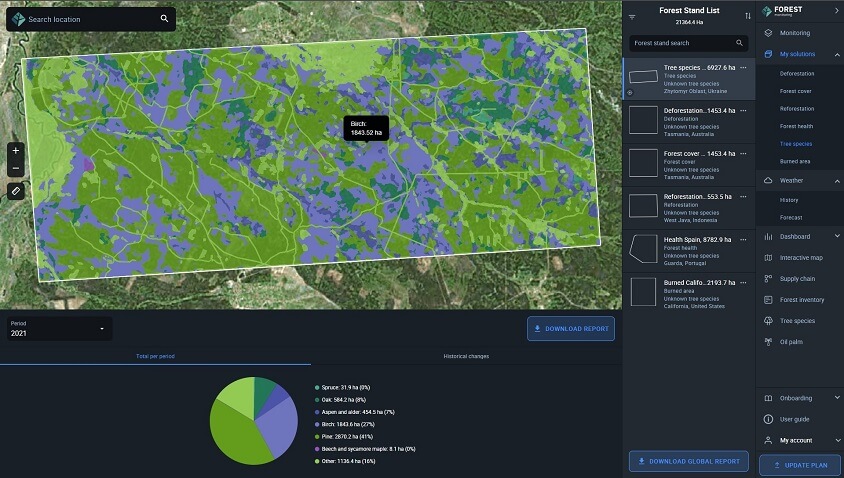
Afforestation and reforestation have many common practices; thus, you can use our Reforestation tool for both. As you set the boundaries of your stand, you can look back at historical satellite imagery to spot sections of forest that were successfully regrown as a result of your efforts. When combined with spatial analysis data from our other products, such as Deforestation, you’ll have a comprehensive picture of how many forest acres have been cleared and how many have been replanted. In this way, you can manage the rate of tree loss on your stand by replanting a corresponding volume of trees each time you cut down any.

We can also provide you with Forest cover, Burned area, and Carbon stock monitoring tools to help you keep a close eye on your forest stands. Feel free to get in touch with our sales team at sales@eosda.com if you have any questions or want to learn more about EOSDA Forest Monitoring solutions for your afforestation initiatives.
What Is The Importance Of Afforestation?
It is vital to prioritize afforestation initiatives, which create new forests and safeguard fundamental ecosystem services, such as water purification and carbon sequestration, to address the pressing challenges of climate change and biodiversity decline. On top of that, if agriculture production fails as a result of climate change, local people will have access to a lifeline in the form of forest resources, highlighting the significance of afforestation at the local level .
It will take a worldwide effort to plant enough trees to significantly slow global warming. Governments, businesses, non-profits, and communities are working towards afforestation efforts all across the world to launch initiatives with the potential to make our planet greener and healthier in the future.
About the author:
Vasyl Cherlinka has over 30 years of experience in agronomy and pedology (soil science). He is a Doctor of Biosciences with a specialization in soil science.
Dr. Cherlinka attended the engineering college in Ukraine (1989-1993), went on to deepen his expertise in agrochemistry and agronomy in the Chernivtsi National University in the specialty, “Agrochemistry and soil science”.
In 2001, he successfully defended a thesis, “Substantiation of Agroecological Conformity of Models of Soil Fertility and its Factors to the Requirements of Field Cultures” and obtained the degree of Biosciences Candidate with a special emphasis on soil science from the NSC “Institute for Soil Science and Agrochemistry Research named after O.N. Sokolovsky”.
In 2019, Dr. Cherlinka successfully defended a thesis, “Digital Elevation Models in Soil Science: Theoretical and Methodological Foundations and Practical Use” and obtained the Sc.D. in Biosciences with a specialization in soil science.
Vasyl is married, has two children (son and daughter). He has a lifelong passion for sports (he’s a candidate for Master of Sports of Ukraine in powerlifting and has even taken part in Strongman competitions).
Since 2018, Dr. Cherlinka has been advising EOSDA on problems in soil science, agronomy, and agrochemistry.
Recent articles
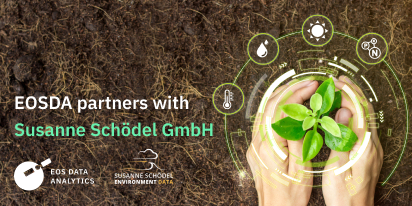
EOS Data Analytics Partners With Susanne Schödel GmbH
EOS Data Analytics and Susanne Schödel GmbH announce a strategic partnership to deliver AI-based satellite imagery analytics and improve crop monitoring and environmental conservation in DACH market.
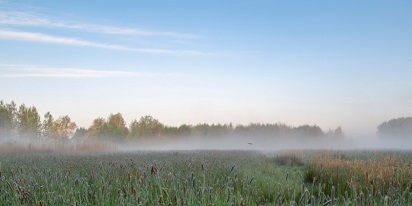
Evapotranspiration Process And Methods Of Measuring
Evapotranspiration is the process of water vapor loss from the soil and plant surfaces. Farmers who are aware of the ET effects on crops are in a better position to increase their farm productivity.

EOSDA Aids Higher Crop Yields With Productivity Maps
Oleksandr Dzhevaga & Aleksey Kryvobok, EOS Data Analytics, discuss models for custom crop productivity mapping, developed as a result of in-house collaboration between data and soil scientists.